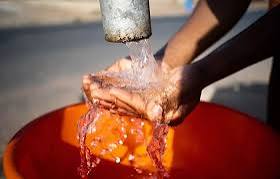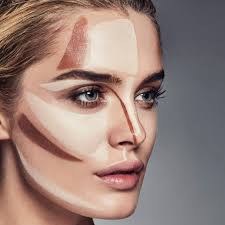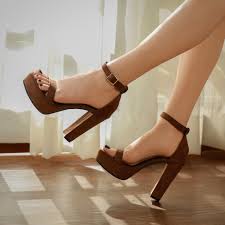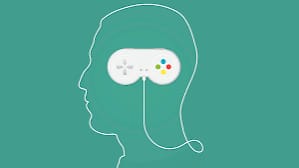Fashion
Discover how hard water causes hair loss, dandruff, kidney stones, dry skin, acne, constipation, baldness, mold, and pimples.

Can Hard Water Cause Hair Loss, Dandruff, and Other Health Issues?
Hard water is a common issue in many households, especially in areas where water contains high levels of minerals like calcium and magnesium. While it may seem harmless, hard water can have various adverse effects on your health, hygiene, and even your home. In this blog post, we’ll explore how hard water causes hair loss, dandruff, kidney stones, dry skin, acne, constipation, baldness, mold, and pimples. If you’re wondering whether hard water could be the reason behind your skin and hair problems or other health concerns, read on.
What is Hard Water?
Hard water contains elevated levels of calcium and magnesium. While these minerals are not inherently harmful, their buildup can create problems. Hard water leaves residues on plumbing, causes scaling on appliances, and, most importantly, interacts negatively with skin, hair, and bodily functions.
Related: mineral-rich water, high calcium water, water hardness problems.
- Hard Water Cause Hair Loss
One of the most noticeable effects of hard water is on hair health. Many individuals report that hard water causes hair loss after prolonged exposure. The minerals in hard water make it difficult to rinse shampoo and conditioner properly, leaving residue behind that clogs hair follicles.
Repeated use of hard water weakens hair strands, making them brittle and prone to breakage. Over time, this can result in significant hair thinning.
How It Happens:
Mineral buildup on the scalp.
Dryness and irritation.
Clogged hair follicles prevent growth.
Using a water softener or a clarifying shampoo can mitigate the effects, but the problem persists unless the water quality is improved.
Related: scalp irritation, hair thinning, weak hair roots.
- Hard Water Cause Dandruff
Another common complaint is that hard water causes dandruff. The minerals interfere with the natural oil balance of the scalp, leading to dryness and flakiness. Unlike dandruff caused by fungal infection, this type is mineral-induced.
Signs to Watch:
White flakes after hair wash.
Itchy, tight scalp.
No relief even with anti-dandruff shampoos.
If you’re experiencing dandruff that won’t go away, your water might be to blame.
Related keywords: itchy scalp, dry scalp, flaking skin.
- Hard Water Cause Kidney Stones
Internally, the effects of hard water can be severe. Hard water causes kidney stones due to its high calcium content. When consumed regularly, the excess minerals can accumulate in the kidneys and form stones.
Risks:
Painful urination.
Abdominal or back pain.
Blood in urine.
Although not everyone who drinks hard water develops kidney stones, individuals predisposed to mineral accumulation are at higher risk.
Related keywords: calcium buildup, urinary issues, stone formation.
- Hard Water Cause Dry Skin
Skin exposed to hard water often feels tight and dry. Hard water causes dry skin because it strips away the natural oils that keep the skin hydrated. The minerals form a film that blocks moisture absorption.
Symptoms:
Itchy skin.
Red patches or flaking.
Sensitive to lotions or soaps.
Switching to softened water or using barrier creams can help, but addressing the root cause is essential.
Related keywords: itchy dry skin, dehydrated skin, skin irritation.
- Hard Water Cause Acne
Many people don’t realize that hard water causes acne. The mineral deposits left on the skin can clog pores, leading to breakouts. This is especially common in teenagers and individuals with sensitive skin.
How Acne Forms:
Pore blockages from mineral residue.
Disruption of skin’s pH balance.
Increased oil production due to dryness.
Even after regular cleansing, the skin may continue to break out if hard water is involved.
Related: clogged pores, facial breakouts, sensitive skin.
- Hard Water Cause Constipation
Yes, you read that right—hard water causes constipation in some individuals. The high calcium and magnesium content can disrupt digestive processes. While magnesium usually promotes bowel movement, the imbalance caused by hard water may have the opposite effect.
Signs:
Irregular bowel movements.
Bloating and discomfort.
Hard or lumpy stools.
Drinking purified or filtered water can often relieve these symptoms.
Related keywords: digestive discomfort, gut health issues, irregular digestion.
- Hard Water Cause Baldness
Long-term exposure to hard water can accelerate hair thinning and even cause baldness. The persistent mineral buildup weakens hair roots and interferes with the scalp’s health.
Warning Signs:
Receding hairline.
Patches of hair loss.
Lack of hair regrowth.
This problem is often mistaken for genetic baldness but may actually be environmentally induced.
Hair loss pattern, permanent hair damage, scalp health.
- Hard Water Cause Mold
Surprisingly, hard water causes mold in homes. The mineral content contributes to scaling and residue that traps moisture, making surfaces more hospitable to mold growth.
Common Areas:
Bathroom tiles.
Showerheads and faucets.
Under-sink cabinets.
Mold thrives in damp, mineral-rich environments. Regular cleaning helps, but water quality must be addressed to prevent recurrence.
Related keywords: mold in bathroom, moisture problems, water residue.
- Hard Water Cause Pimples
Similar to acne, hard water causes pimples due to clogged pores and skin irritation. This type of breakout can appear anywhere on the body, not just the face.
Notable Symptoms:
Red, painful bumps.
Clusters of pimples after showering.
Skin doesn’t respond to regular treatment.
If switching skincare products doesn’t help, it’s time to investigate your water source.
Related keywords: skin inflammation, pore blockage, body acne.
How to Test and Treat Hard Water
To determine whether your water is hard, you can use a water testing kit or have it professionally analyzed. Look for signs like:
White film on dishes or faucets.
Soap that doesn’t lather well.
Hair and skin issues even with quality products.
Solutions:
Install a Water Softener: Removes calcium and magnesium through ion exchange.
Use Filtered Water for Washing Face and Hair: A shower filter can help reduce mineral exposure.
Hydrate Your Skin and Hair: Use products designed for hard water exposure.
Drink Filtered or Bottled Water: This can help avoid internal health problems like kidney stones and constipation.
Final Thoughts
It’s clear that hard water causes hair loss, dandruff, kidney stones, dry skin, acne, constipation, baldness, mold, and pimples in many cases. While not everyone will experience all these symptoms, those with sensitive skin, digestive issues, or scalp problems are particularly vulnerable. Addressing hard water at the source, either by using filters or water softening systems, can greatly improve your overall health and well-being.
Summary Table of Issues:
Problem Hard Water Impact Recommended Solution
Hair Loss Weakens hair & clogs follicles Clarifying shampoo, softener
Dandruff Scalp irritation & dryness Moisturizing hair care
Kidney Stones High calcium intake Drink filtered water
Dry Skin Strips natural oils Barrier creams, soft water
Acne Clogged pores from minerals Use pH-balanced cleanser
Constipation Mineral imbalance Filter drinking water
Baldness Long-term follicle damage Address water source
Mold Mineral scaling traps moisture Regular cleaning, dehumidifier
Pimples Skin irritation Gentle skincare & filter use
By being proactive, you can protect your skin, hair, and health from the hidden dangers of hard water. Don’t wait until the symptoms get worse—take action today.
Meta Description: Discover how hard water causes hair loss, dandruff, kidney stones, dry skin, acne, constipation, baldness, mold, and pimples. Learn signs, symptoms, and effective solutions.
Focus: Hard water cause hair loss, hard water cause dandruff, hard water cause kidney stones, hard water cause dry skin, hard water cause acne, hard water cause constipation, hard water cause baldness, hard water cause mold, hard water cause pimples.

Fashion
How to Contour Your Face: A Complete Guide for Every Age and Skill Level

How to Contour Your Face: A Complete Guide for Every Age and Skill Level
Contouring has become one of the most popular makeup techniques in beauty. Learning how to contour your face properly can transform your features, enhance your natural bone structure, and give you a polished look without appearing overly done. Whether you’re a beginner or an older woman looking for subtle definition, this guide will show you an easy how to contour your face routine that works for everyone.
What Does Contouring Do?
When you learn how to contour your face, you are essentially playing with light and shadow. Darker shades create depth and slim down certain areas, while lighter shades highlight and bring forward the features you want to enhance. Many people believe contouring is complicated, but the truth is, there are easy how to contour your face techniques that even beginners can master.
Step-by-Step: How to Contour Your Face for Beginners
If you’re just starting out, you may wonder how to contour your face for beginners in a way that feels natural. Here’s a simple method:
Prep Your Skin – Always start with a clean, moisturized face.
Choose the Right Products – Powder contour is best for beginners, while creams give a more dramatic look.
Map Out Your Face – Apply contour under the cheekbones, along the jawline, and at the temples.
Blend, Blend, Blend – The secret to natural contouring is seamless blending.
Highlight the High Points – Add a light shade to the bridge of your nose, tops of your cheeks, and center of the forehead.
Following this routine makes how to contour your face with makeup much less intimidating.
Easy How to Contour Your Face: Quick Tips
If you don’t have much time in the morning, try this easy how to contour your face method:
Use a bronzer two shades darker than your skin.
Apply with an angled brush under your cheekbones.
Blend upward for a lifted look.
Sweep a soft highlighter across your cheekbones for instant glow.
This simplified version of how to contour your face is perfect for busy schedules.
How to Contour Your Face with Makeup: Choosing the Right Tools
Mastering how to contour your face with makeup isn’t just about placement—it’s also about tools. A fluffy blending brush will give a soft finish, while a beauty sponge helps with cream products. For precision, a small angled brush works best around the nose and jawline. With the right tools, you’ll discover that even an easy how to contour your face look can appear professional.
How to Contour Your Face as an Older Woman
If you’re wondering how to contour your face older woman, the key is subtlety. Heavy contouring can emphasize fine lines, but a soft hand creates a youthful lift. Use cream-based products, which blend smoothly and hydrate the skin. Apply lightly under the cheekbones and blend upward—this is the gentlest approach to how to contour your face older woman without making it appear harsh.
Here are three tips specifically for mature skin:
Stick to warm tones for a natural finish.
Avoid glittery highlighters; instead, choose a satin sheen.
Focus on lifting, not slimming, the features.
With these steps, how to contour your face older woman becomes more about elegance than drama.
Common Mistakes When Learning How to Contour Your Face
While figuring out how to contour your face, many beginners fall into these traps:
Using shades that are too dark.
Forgetting to blend properly.
Contouring in harsh lines instead of soft strokes.
If you want to know how to contour your face for beginners without errors, always remember: less is more.
Final Thoughts
Learning how to contour your face doesn’t have to be overwhelming. Whether you’re curious about how to contour your face with makeup, just starting with how to contour your face for beginners, or exploring how to contour your face older woman techniques, the basics remain the same: choose the right products, map your features, and blend thoroughly.
With practice, you’ll master an easy how to contour your face routine that enhances your natural beauty and boosts your confidence every single day.

Fashion
The Fascinating History of High Heels: From Royalty to Runways

The Fascinating History of High Heels: From Royalty to Runways
High heels have long been more than just shoes—they represent power, beauty, and cultural identity. To understand how stilettos and pumps became fashion staples, we need to look back at the history of high heels, tracing their origins, transformations, and cultural significance over time.
The Origins of High Heels
The history of high heels dates back centuries before they became fashionable. Many historians trace the origins of high heels to 10th-century Persia, where horsemen wore elevated shoes to secure their feet in stirrups. This practical purpose slowly evolved into a status symbol, showing that the wearer lived a life of wealth and privilege.
When examining the history of high heels, it becomes clear that they weren’t always associated with femininity. In fact, men in European courts adopted them during the 16th and 17th centuries to showcase authority and sophistication. This early chapter in the history of high heels timeline reveals that high heels were first about power, not fashion.
The History of High Heels in Royal Courts
By the Renaissance, the history of high heels had taken a glamorous turn. Royals like Catherine de’ Medici helped popularize them as symbols of elegance and status. This period marks an important shift in the history of high heels timeline, when footwear became a key part of fashion identity.
The evolution of high heels during this time showed clear gender distinctions: women embraced them for beauty, while men used them to emphasize social dominance. The origins of high heels as practical tools had now transformed into emblems of style.
Why Were High Heels Invented?
When asking why were high heels invented, the answer lies in a mix of practicality and symbolism. Originally, they were designed for horseback riding, but their cultural meaning shifted as they entered European fashion. The history of high heels timeline demonstrates how a practical design became a sign of luxury and refinement.
Later, during the 18th century, men abandoned them, leaving high heels as an almost exclusively feminine accessory. This moment in the history of high heels redefined them forever, solidifying their place in women’s wardrobes.
High Heels in Fashion History
The 19th and 20th centuries marked a turning point in high heels in fashion history. Shoe technology improved, and designers experimented with height, structure, and elegance. The history of high heels timeline during this era highlights iconic designs, from kitten heels to platform shoes.
The evolution of high heels accelerated after World War II, when Christian Dior’s “New Look” embraced stilettos as symbols of femininity. From Hollywood icons to everyday women, heels became essential for glamour and style.
High Heel Styles Through the Ages
Looking at high heel styles through the ages, we see dramatic shifts. The 1970s loved chunky platforms, the 1990s brought sleek pumps, and today’s designers mix practicality with bold statements. This constant reinvention shows how deeply the history of high heels is tied to culture and fashion trends.
Even in the 21st century, the evolution of high heels continues, blending heritage with innovation. Whether for empowerment, elegance, or artistry, their enduring appeal proves that the history of high heels timeline is far from over.
Conclusion: The Ongoing History of High Heels
The history of high heels is more than just a story about shoes—it’s a narrative of power, fashion, and identity. From Persian horsemen to Parisian runways, the origins of high heels reveal how footwear became a global symbol of beauty and strength.
As we trace the history of high heels timeline, one thing remains clear: high heels are not just accessories. They are cultural icons that continue to evolve, shaping how we walk, dress, and express ourselves.

Business
The Ultimate Guide to Miniature Painting: Tips, Tools, and Techniques

The Ultimate Guide to Miniature Painting: Tips, Tools, and Techniques
Miniature painting has become one of the most rewarding hobbies for artists, gamers, and collectors around the world. Whether you’re painting miniatures for tabletop games, working on decorative pieces, or exploring traditional Persian miniature painting, this art form combines patience, skill, and creativity. In this guide, we’ll cover everything you need to know about miniature painting, the essential tools you’ll need, and expert tips to help you get started.
What is Miniature Painting?
Miniature painting is the art of bringing small-scale figures or designs to life with detail and precision. From fantasy game characters to museum-worthy Persian miniature painting, the practice has evolved into a mix of traditional artistry and modern hobby craft. What makes miniature painting so exciting is the challenge: capturing depth, emotion, and realism on a tiny canvas.
Essential Miniature Painting Supplies
To succeed in this hobby, you’ll need the right miniature painting supplies. A basic setup should include:
Miniature painting brushes of different sizes for detail work.
A miniature painting handle to hold your model securely.
A miniature painting kit with paints, primer, and essential accessories.
The best wet palette for miniature painting to keep your paints fresh and workable.
Investing in quality supplies ensures cleaner results and makes the process much more enjoyable.
Choosing the Best Brushes for Miniature Painting
One of the most common questions beginners ask is: What are the best brushes for miniature painting? The answer depends on your budget and goals. Synthetic brushes are affordable and durable, while sable hair brushes offer superior precision for fine details. The best brushes for miniature painting should have a fine tip, good spring, and the ability to hold paint well.
Miniature Painting Kits for Beginners
If you’re just starting out, a miniature painting kit is a smart investment. These kits often include paints, brushes, and sometimes a miniature figure to practice on. Beginners can learn techniques like dry brushing, layering, and blending without spending too much upfront.
Tools That Make a Difference
Miniature painting is much easier with the right tools. A miniature painting handle keeps your hands steady, while a wet palette ensures your paint doesn’t dry too quickly. Many artists also recommend magnifying lamps to make details more visible.
Professional Miniature Painting Service
Not everyone has the time or skill to paint miniatures themselves. That’s where a miniature painting service comes in. These services allow you to commission skilled artists to paint your miniatures at a professional level. Whether it’s for a game army or a display model, a miniature painting service can bring your vision to life.
The Beauty of Persian Miniature Painting
While most people associate miniature painting with gaming, it’s important to acknowledge its roots. Persian miniature painting is a centuries-old tradition known for intricate details, vibrant colors, and storytelling elements. Learning from these historic works can inspire modern hobbyists to improve their skills and appreciate the depth of miniature art.
Tips for Success in Miniature Painting
Start simple: Practice on inexpensive figures before moving to premium models.
Use thin layers of paint to avoid losing detail.
Experiment with color schemes and lighting effects.
Take breaks to prevent eye strain and shaky hands.
Keep your miniature painting brushes clean and well-maintained.
Final Thoughts
Miniature painting is more than just a hobby—it’s a form of artistic expression. With the right miniature painting supplies, the best brushes for miniature painting, and tools like a miniature painting handle or wet palette, you can take your skills to the next level. Whether you choose to learn on your own with a miniature painting kit or hire a miniature painting service, this creative journey is worth every brushstroke.
From the elegance of Persian miniature painting to the thrill of customizing your own miniatures, the world of miniature painting offers endless possibilities. Start small, stay patient, and watch as your artistry grows with each model.

-

 Business2 months ago
Business2 months ago☕️The Ultimate Coffee Lover’s Guide: From Caffeine in a Cup of Coffee to Turkish Coffee Delights
-

 Business2 months ago
Business2 months agoThe Many Faces of “Future”: Markets, Farming, Music, AI, and a Better Tomorrow
-

 Health2 months ago
Health2 months agoA Journey Through Life’s Firsts: Health, Gaming, and Experiences That Shape Us
-

 Business2 months ago
Business2 months agoIn today’s fast‑moving economy, what industry is slowly dying and why?
-

 Lifestyle2 months ago
Lifestyle2 months agoWhat is life Philosophy?
-

 Tech1 month ago
Tech1 month agoUltimate Secret Android Apps You’ll Actually Love
-

 Business2 months ago
Business2 months agoRussia’s Energy Ministry Launches Crypto Mining Register
-

 Lifestyle2 months ago
Lifestyle2 months ago🐦 The Ultimate Bird Watching Guide: Best Birdwatching Locations & Tips for Beginners



